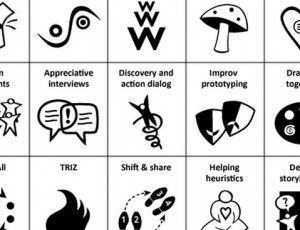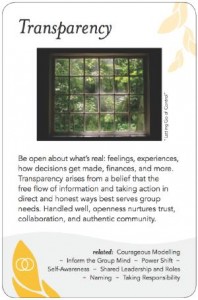Designers use Pattern Language — a lexicon and grammar that communicate the details of how and why a design is terrific — to share expertise and promote good design.
We need a pattern language for business-to-business relationships.
We need to be able to define, design and simply talk about business relationships that are generative.
 “Good design” tends to follow a set of patterns. For example, when we design a building and we make sure that the building has ‘gradations of intimacy’ from public to private space, we’re using a pattern that helps make our building ‘good’.
“Good design” tends to follow a set of patterns. For example, when we design a building and we make sure that the building has ‘gradations of intimacy’ from public to private space, we’re using a pattern that helps make our building ‘good’.
Mindful designers of any type turn to their shared pattern language to define, describe, convey, and create good design.
B2B Relationship Design
When we’re designing relationships and interactions to generate opportunities for our business and others, the patterns we choose make these interactions more or less effective.
Patterns of behavior that evoke empathy, patterns that lead to trust, patterns that make generosity the default, patterns that stimulate collisions, and patterns that invite diverse perspectives, will all make it more likely that relationships will be generative.
Even though we have many patterns that create generative interaction, very few leaders and managers are aware of these patterns. Even fewer have a language for describing what these tools help to create. Without a pattern language, it’s not only hard to recognize good patterns when we see them, it’s hard work to design these patterns into our businesses.
Without a shared language for generative patterns, we default to patterns that don’t actually create the interactions we need.
Consider the pattern we default to when a group of business people get together to explore a shared interest.
We’ve all been part of an assembly of stakeholders where somebody gives a presentation, poses a question that we need to resolve together, and sends us into ‘breakout rooms”. There, someone stands in front of the blank white flip chart, stinky marker in hand, ready to capture anything- something, please- to report back to the big group.
What does this pattern of interaction do? The leader or expert pronounces the challenge, the underlings work out the applications and contribute ideas, which are then aggregated for the organization’s benefit to apply as it choses.
What’s the name of that pattern? Who knows. While this pattern-without-a-good-name is appropriate to some tasks, it doesn’t create the kinds of interaction that generative businesses want to have with their peers, employees, neighbors, protégées, or allies.
We have the patterns, but we lack a shared pattern language.
We have no shared way to recognize, recreate, and deliberately design generative> interactions.
Luckily, there are three groups (and probably more that I’m not aware of) that are working to pull these tools together, give them names, and promote them to leaders and managers as a larger pattern language.
Three Groups Creating a Pattern Language for Generative Interactions
Take a look at the work of these three groups:
These groups are working independently, but they share the same foundational models and overarching goals: collective purpose, shared power, capacity building, and mutual benefit.
Art of Hosting
Art of Hosting is a set of practices and a community of practitioners focused on integrated participative change processes.
![]()
The tools of Art of Hosting are a set of patterns and practices that help groups be successful in complex circumstances. Art of Hosting practices scale all the way from personal level to the systemic level, using personal action, dialogue, facilitation, and the co-creation of innovation. (You might know AOH by its more business-y name, Art of Participatory Leadership.)
The techniques help not only with surfacing information, perspectives, ideas, and other content— they are also designed to build the capacity of the participants to work together within that particular (business) system.
Art of Hosting practices include the Circle Practice, Open Space Technology, World Cafe, Collective Story Harvesting and Appreciative Inquiry. Some of these names may seem unfamiliar, but among Art of Hosting practitioners they are the basics of a pattern language that describes what integrated participative change processes among individuals could look like.
When you know these patterns, you can use them in any situation to improve interactions, outcomes, and the system’s capacity.
Liberating Structures
On a smaller scale, both in terms of range and in terms of the size of the groups where we’d use them, are the Liberating Structures.

Liberating Structures are 33 different patterns for shaping interaction that ‘include and unleash everyone’.
Patterns like “troika consulting” and “1-2-4-all” each have a specific purpose and configuration of basic elements (e.g., arrangement of the space, how participation is distributed) that distribute control and participation among everyone present. For example, Improv Prototyping is a method for developing effective solutions to chronic challenges by acting out possible solutions.
Just as with Art of Hosting, Liberating Structures Practitioners know these patterns by name as well and by purpose and configuration. They have a shared language for recommending, directing, and explaining how to shape person-to-person interactions.
Group Pattern Language Project
The Group Pattern Language Project created a deck of cards to reflect their version of a ‘Pattern Language for bringing life to meetings’.
The deck includes nearly 100 different positive patterns of interaction. These “GroupWorks” patterns are clustered in to 10 categories, such as relationships, creativity, and inquiry/synthesis. The named patterns and their descriptions are ‘more specific than general values and less specific than tools and techniques’.
The cards can be used by anyone in a group, at any time during the process, to help participants analyze, prompt and guide the group’s interactions. I’ve used these cards in group facilitation situations where I’ve wanted to remind myself and/or draw other people’s attention to particular patterns that seem relevant to the groups’ work at hand.
It’s Easy to Learn Generative Pattern Language
None of these three approaches to designing positive group interactions is difficult to learn.
You can easily download the GroupWorks cards, read up on specific Liberating Patterns, and sign up for an Art of Hosting webinar.
Although these patterns are easier to use if you’ve been trained in group facilitation, organizational development, or community organizing, anyone who wants to improve their business’s interactions with stakeholders can start learning just by reviewing each group’s website. (See resources, below).
Even better, you can start talking about these patterns when you are describing for yourself, your stakeholders, and your colleagues.
- A BizDev person could say “Let’s ‘shift and share‘ to get a bigger picture on this deal.”
- A Community Manager could suggest some Story Harvesting to engage members more empathically, and
- A Developer Evangelist could remind herself to “Value the Margins” as she brings users’ concerns to the coders making the product.
Let’s learn a shared pattern language, to design B2B relationships that are generative.
As Wittenstein so famously remarked, “The limits of our language are the limits of our world.”
When we introduce ourselves to the pattern language of generative interactions, we introduce each other to new ways of connecting, contributing, and creating opportunity. (click to tweet)
(click to tweet)
We can learn and recreate generative patterns for our business relationships, patterns that build our business while they boost opportunities for others.
Resources:
Art of Hosting Website, and their Art of Hosting Community
Group Works Pattern Language site
The Liberating Structures Website, start with the F.A.Q.
Other pattern collections include the Feminist Leadership for Social Transformation, Collective Action Toolkit, Culture Hacking,

 I am an organizational consultant, change advocate, and organizational identity/reputation scholar with a PhD in leadership & organizations. I research, write about, and consult with organizations on the relationships between organizational identity, actions, and purpose. I teach Technology Management, part-time, at Stevens Institute of Technology.
My current research focuses on how social technologies in the workplace can drive organizational change, generate meaning, and catalyze purpose. See the
I am an organizational consultant, change advocate, and organizational identity/reputation scholar with a PhD in leadership & organizations. I research, write about, and consult with organizations on the relationships between organizational identity, actions, and purpose. I teach Technology Management, part-time, at Stevens Institute of Technology.
My current research focuses on how social technologies in the workplace can drive organizational change, generate meaning, and catalyze purpose. See the 
Comments on this entry are closed.